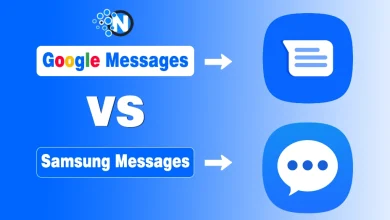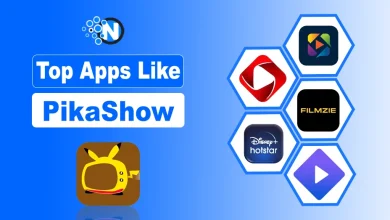In-App Purchases vs. Ads: Choosing the Right Monetization Model

Turning your mobile app into a source of income requires more than just a few ads or payment options. It’s about choosing a revenue model that fits your app’s purpose, targeted audience, and domain. Whether it’s a wellness tracker, gaming app, productivity app, or social network, how you earn revenue matters. This can shape how much money your app makes over time.
The global app market is growing fast, with a 7.48% annual increase, and is expected to reach $781.70 billion by 2029.
You will need a well-executed app launch in a competitive market with many apps to stand out. That also includes picking the right strategies to make money. Depending on the app domain and targeted audience segment, you can select various monetization strategies.
In this blog post, I will compare In-App Purchases vs. Ads to help you choose the right monetization model.
Let’s start!
What is App Monetization?
App monetization is the process of generating revenue from a mobile or web application. It’s all about how developers turn their apps into earning machines, especially when most apps are free to download.
App Monetization Models
There are various app monetization strategies developers can consider to make money through apps.
The most common ones are the following:
- Paid apps: users buy the product once.
- Freemium apps: these are free to download, but users pay to access advanced features.
- In-app ads: ads appear within the app.
- Subscriptions: users pay a recurring fee.
- Affiliate marketing: apps promote other products and earn a commission.
Understanding In-App Purchases (IAP)
As mobile apps grow and improve, in-app purchases have become a powerful way to earn money. This model lets users buy digital items, special features, or extra content, helping you earn more than just the download.
IAP works well for games, productivity tools, and entertainment apps. Users in these categories often pay for a better or more complete experience. There are a few types of in-app purchases:
- One-time purchases. Unlock a feature, remove ads, or buy something once.
- Recurring subscriptions. Pay regularly to access premium tools or content.
- Premium content. Download e-books, add-ons, or extras that engage users.
With correct implementation, IAP can significantly improve your app’s performance. But if it’s done poorly, it may lead to weak sales, unhappy users, and a bad experience. The key is to offer purchases that feel useful and natural, not annoying or pushy.

The following are some of the pros and cons of IAP:
| Pros | Cons |
|---|---|
| High revenue potential | Risk of low conversion rates |
| Keeps the app free to download, attracting a larger user base | Require compliance with platform-specific regulations like App Store and Google Play |
| Flexible pricing options |
Using In-App Ads for Revenue
The increasing number of mobile application users has made in-app ads a new means of generating revenues, particularly for free apps. Rather than applying a recurring fee to users for downloading the app, the developers benefit by displaying advertisements within the application.
The secret is to strike a balance between ads and the user experience. An excess of advertising can be irritating and drive traffic away; however, when it is appropriately placed, advertising can also be a source of stable revenue, which will not adversely affect usage. There are different types of ads to choose from depending on the target users and mobile app domain:
- Banner ads: small ads at the top or bottom of the screen.
- Rewarded video ads: users watch a video to earn in-app rewards.
- Native ads: ads that match the look and feel of the app.
- Interstitial ads: full-screen ads that show between actions or levels.
Picking the right format matters, as does the number and placement of ads. Bad choices can lead to users deleting the app, whereas good choices keep them returning. Choosing the right ad network can also boost earnings. The most popular ones are Google AdMob and Meta Audience Network.

The following are some of the pros and cons of in-app ads:
| Pros | Cons |
|---|---|
| Generates revenue without charging users | Can hurt user experience |
| Scales with user growth | Ad fatigue |
| Variety of ad formats | Lower revenue per user |
| Attractive to advertisers | |
| Can offer user value |
Choosing the Right Monetization Strategy
Choosing the appropriate method to make money out of your app is balancing. The in-app purchases and ads are both effective. They are capable of increasing income, yet the user experience is not compromised by their application in combination. There are users, who do not mind seeing ads, and there are users who want to pay to have some additional features or to see no ads at all. Providing the two options will leave the user with a bigger choice.
An optimal monetization method can be chosen based on your niche within the application industry, target market, and their interaction with the application. You need to analyze your user data: age, location, habits, and the way they treat your product. This assists you in choosing a model that will suit your users and your objectives.
Best Practices for Maximizing Revenue
You cannot simply establish your monetization strategy and leave it unchanged to stabilize your income over time. Instead, what you want to do is continue experimenting with new approaches and strategies, user behavior, ad placements, or price models. Finally, on having all these tests, keep analyzing the user response and the data to understand what is going well and what is not.
Google Analytics and App Store Insights are just a few of the splendid tools that enable users to learn extensively through data. They give details regarding user habits, clicks, sessions, retention, and conversion rates.
A warning: do not let ads get in the way. When your app becomes congested or bothering, users will abandon it. It is to experiment, making smart use of your data and creating something people will like using. Then do that right, and you will expand your revenue and create loyal users who do not leave.
Balancing Monetization and User Experience: The Key Takeaways
App monetization works well when you prioritize user experience. The core purpose is to generate as much revenue as possible without irritating the users. As to whether you use in-app purchases, ads, or a combination, the right strategy will require an understanding of your audience and how well they respond.
Smart monetization does not bombard users with advertisements or place blocking functions behind paywalls. Such a method of A/B testing on various ad types, rewarded videos, banners, or native ads allows you to discover what suits you better and does not annoy the user. Meanwhile, in-app purchases are to cost reasonable money and bring true value. This is what increases the level of trust and makes users spend money.




